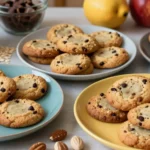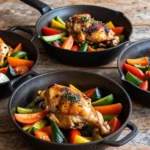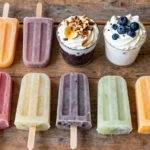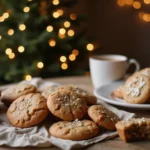We’ve all experienced that perfect moment when a warm cup of tea transforms an ordinary day into something special. Oolong tea strikes the perfect balance between the freshness of green tea and the boldness of black tea, creating a complex flavor profile that’s captivated tea lovers for centuries. This partially fermented tea originated in China’s Fujian province and has become one of the industry’s most beloved varieties.
What makes oolong truly exceptional is its unique processing method. The tea leaves are withered under the sun and then oxidized before being curled and twisted. This careful process creates those distinctive rolled leaves that unfurl beautifully in hot water, releasing layers of floral, fruity, and sometimes nutty notes.
We’re excited to share our foolproof method for brewing the perfect cup of oolong tea. Whether you’re a tea novice or a seasoned enthusiast, you’ll discover how simple it is to unlock this tea’s full potential right in your own kitchen.
Equipment Needed
Brewing exceptional oolong tea requires exact equipment that allows us to control temperature and steeping time with precision. We recommend gathering these essential tools before beginning our brewing process.
Teapot or Gaiwan
We prefer using a ceramic or clay teapot with a capacity of 6 to 8 ounces for optimal brewing. Yixing clay teapots work exceptionally well for oolong tea as they retain heat effectively and enhance the tea’s natural flavors. A gaiwan serves as an excellent alternative and provides better control over steeping times for multiple infusions.
Digital Kitchen Scale
Accurate measurement forms the foundation of perfect oolong tea. We use a digital scale to measure both tea leaves and water precisely. This tool eliminates guesswork and ensures consistent results every time we brew.
Water Thermometer
Temperature control distinguishes good oolong tea from exceptional oolong tea. We rely on an instant-read thermometer to monitor water temperature between 185°F and 205°F. Different oolong varieties require exact temperature ranges for optimal extraction.
Timer
Precise timing prevents over-extraction and bitterness in our oolong tea. We use a digital timer to track steeping intervals ranging from 30 seconds to 3 minutes depending on the brewing method and desired strength.
Fine Mesh Strainer
A fine mesh strainer catches loose tea leaves and prevents them from entering our cup. We choose strainers with mesh fine enough to capture even the smallest tea particles while allowing the liquid to flow freely.
Kettle for Water Heating
An electric kettle with temperature control settings streamlines our brewing process. We select kettles that can maintain exact temperatures rather than just boiling water to room temperature.
Tea Cups
Small ceramic or porcelain cups enhance our tasting experience. We use cups that hold 2 to 4 ounces to concentrate the oolong’s complex aromatics and allow for proper temperature retention during drinking.
Ingredients
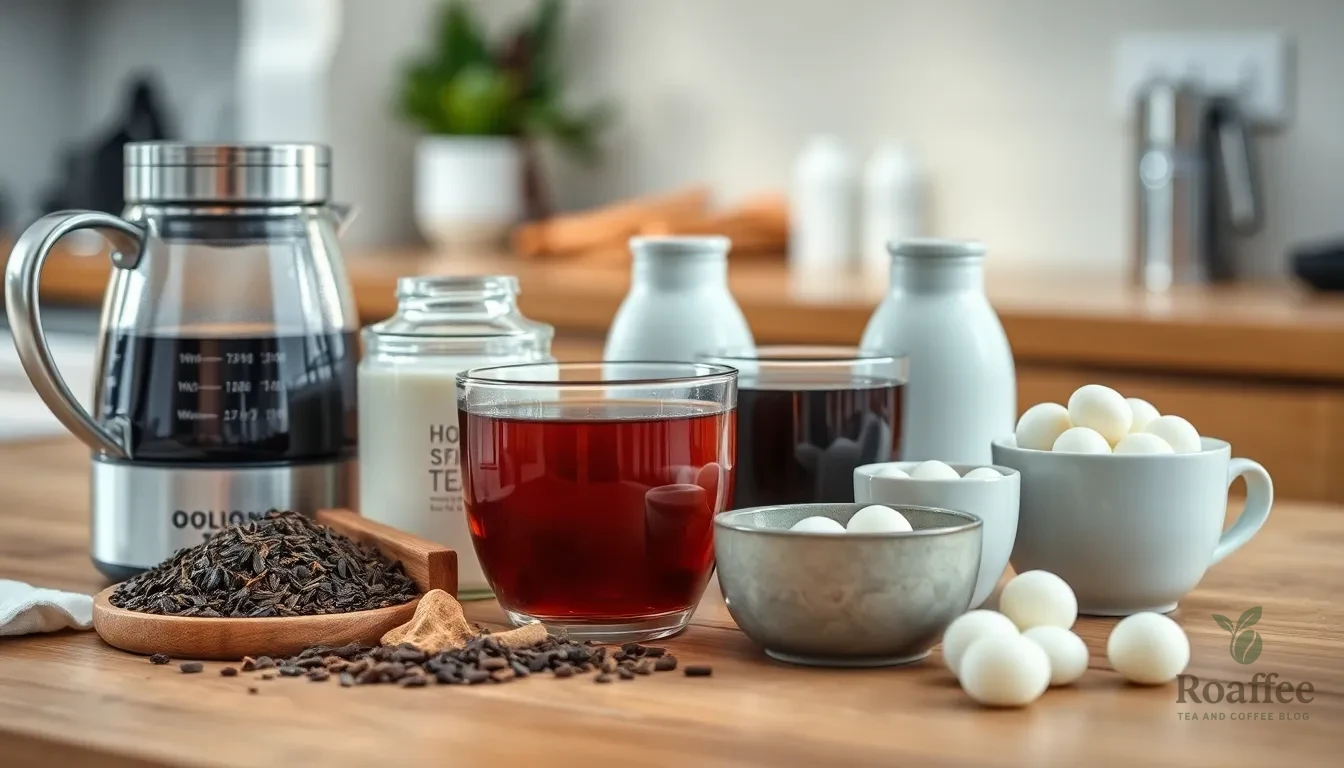
The beauty of oolong tea lies in its simplicity, requiring just a few quality ingredients to create an exceptional cup. We’ve organized these ingredients in the order you’ll use them, ensuring smooth preparation from start to finish.
Basic Oolong Tea
- 3 teaspoons loose-leaf oolong tea (or 2 tea bags for convenience)
- 2 cups filtered water (heated to 80-95°C or 180-205°F)
- Sweetener (optional): honey, brown sugar, maple syrup, or agave to taste
Oolong Tea Latte Variation
- 1 teaspoon oolong tea powder (or 2 tea bags)
- 60 ml hot water (for brewing concentrate)
- 125 ml milk (dairy or non-dairy alternatives like almond, soy, oat, or coconut milk)
- Brown sugar or honey (to taste)
- Whipped cream (optional topping)
- Ice cubes (for iced version)
Creamy Oolong Milk Tea (Bubble Tea Style)
- 3 teaspoons loose-leaf oolong tea (preferred for rich flavor)
- 2 cups filtered water (for brewing base)
- 1 cup whole milk (or plant-based milk for creaminess)
- ½ cup brown sugar (for syrup base)
- ¼ cup water (for dissolving sugar)
- ¾ cup tapioca pearls (cooked boba for texture)
- 3 cups water (for cooking tapioca pearls)
Loose-leaf oolong tea delivers superior flavor compared to tea bags, while the semi-oxidized processing creates the perfect balance between floral and earthy notes. We recommend using filtered water to avoid any chlorine taste that might interfere with the tea’s delicate flavor profile. Brown sugar syrup adds depth and complements oolong’s natural sweetness better than regular granulated sugar.
Instructions
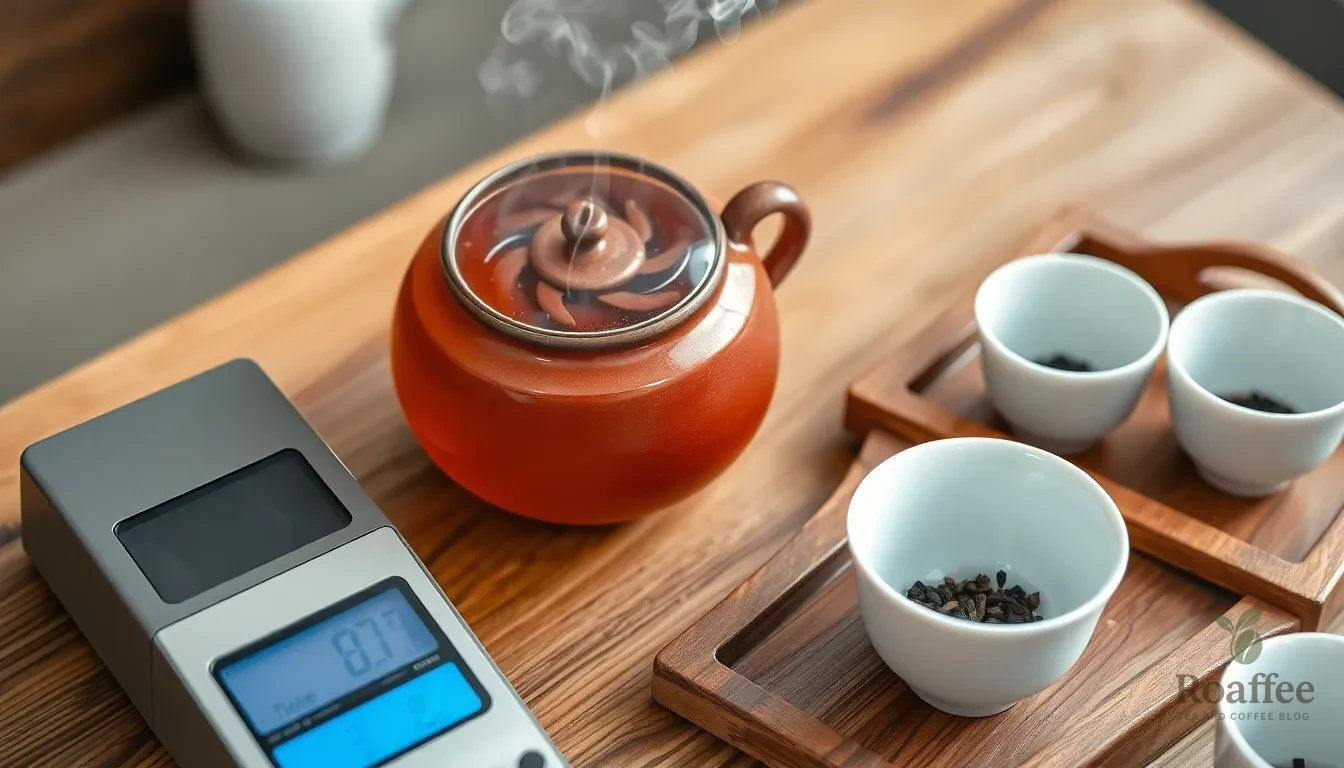
Follow these carefully tested steps to brew exceptional oolong tea that showcases its complex flavor profile. Each stage requires attention to detail for optimal results.
Prep the Tea
We begin by preparing our teapot and measuring the perfect amount of tea leaves. Pour boiling water into your ceramic or clay teapot to warm it thoroughly then discard the water completely. This crucial step ensures our brewing temperature remains consistent throughout the process.
Measure 2-5 grams of loose-leaf oolong tea using your digital kitchen scale for precision. Place the measured tea leaves directly into your warmed teapot. The leaves should have room to expand during steeping so avoid overcrowding your brewing vessel.
Heat the Water
Temperature control determines the success of your oolong tea brewing process. Heat filtered water to the appropriate temperature based on your exact oolong variety. Most oolong teas require water heated to 90-95°C (195-205°F) for optimal extraction.
Lighter oolongs like Oriental Beauty demand gentler treatment with water temperatures between 80-85°C (175-185°F). Use your water thermometer to monitor the temperature accurately. Fresh filtered water produces the cleanest flavor profile and prevents mineral interference with the tea’s delicate notes.
Steep the Tea
Start with a quick rinse to awaken the tea leaves and remove any dust particles. Pour hot water over the leaves immediately then discard this first pour without steeping. This preparation step enhances the flavor of subsequent brews.
Pour 225-250 ml of properly heated water over the rinsed leaves and cover your teapot. Steep your first infusion for 3-5 minutes depending on your flavor preference. Quality oolong tea rewards multiple infusions with evolving flavor profiles.
| Infusion Number | Steeping Time | Notes |
|---|---|---|
| 1st | 3-5 minutes | Initial full steeping |
| 2nd | 50 seconds | Shorter subsequent brew |
| 3rd-5th | +10-15 seconds each | Gradually increase timing |
| 6th-8th | Up to 2 minutes | Extended steeping for final extractions |
Watch as the tightly rolled leaves unfurl during steeping to release their layered flavors and aromatic compounds.
Strain and Serve
Pour the brewed tea immediately into your serving cups or a separate vessel after each steeping cycle. Leave the spent leaves in the teapot without water until your next infusion to prevent over-extraction and bitterness.
Avoid letting brewed tea sit on the leaves for extended periods as this creates harsh flavors that mask oolong’s subtle characteristics. Serve each infusion promptly to appreciate the tea’s evolving flavor journey from the first cup through the final steeping.
Brewing Tips for Perfect Oolong Tea
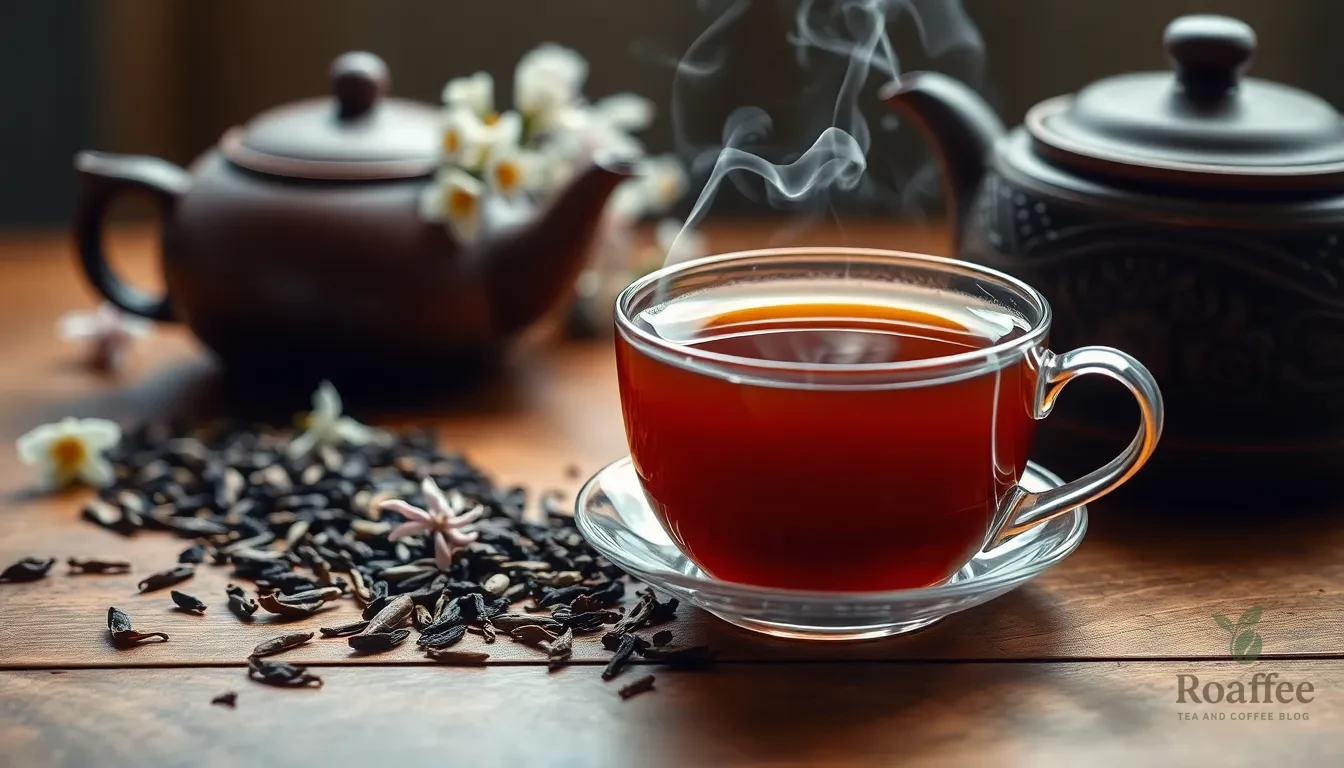
Mastering the art of oolong brewing requires attention to three crucial factors that dramatically impact your tea’s flavor profile. We’ll guide you through the precise techniques that unlock oolong’s complex character across multiple infusions.
Water Temperature Guidelines
Temperature control serves as the foundation for exceptional oolong brewing. Different oxidation levels require exact temperature ranges to extract optimal flavors without overwhelming the delicate leaf structure.
| Oxidation Level | Temperature Range (°F) | Temperature (°C) |
|---|---|---|
| Lightly oxidized oolong | 175-185 | 80-85 |
| Medium oxidized oolong | 185-195 | 85-90 |
| Heavily oxidized oolong | 195-205 | 90-96 |
Lower temperatures preserve the delicate floral and fruity notes characteristic of lighter oolongs. Higher temperatures extract the deeper roasted flavors found in heavily oxidized varieties. We recommend using fresh filtered water rather than re-boiled water since multiple boiling cycles reduce oxygen content and dull the tea’s natural brightness.
Steeping Time Variations
Oolong tea rewards patience with multiple infusions that reveal evolving flavor layers. Traditional Gongfu brewing style begins with 20-30 second infusions and increases steeping time by 30 seconds to 1 minute for each subsequent brew.
Western-style steeping requires 1-2 minutes for the first steep. Most quality oolongs support 5-8 infusions with flavor profiles that transform beautifully across successive brews. We suggest starting with shorter steeping times and adjusting based on your taste preferences since you can always extend the next infusion.
Tea-to-Water Ratio
Proper leaf-to-water ratios ensure full flavor extraction without overpowering bitterness. We recommend using 5-7 grams of tea per 100 ml of water for rich concentrated flavor.
Another reliable guideline uses 1 gram of tea per 50 ml of water. For a standard 150 ml cup use 3 grams of loose-leaf tea. Tea bags typically require 3 grams per 250-350 ml of water. Fill approximately one-third of your teapot volume with tea leaves to allow proper leaf expansion during brewing.
Pre-rinse your tea leaves with hot water briefly before the first steep to awaken their flavors. Adjust both temperature and steeping time based on your tea’s leaf shape and personal taste preferences for the perfect cup.
Flavor Variations
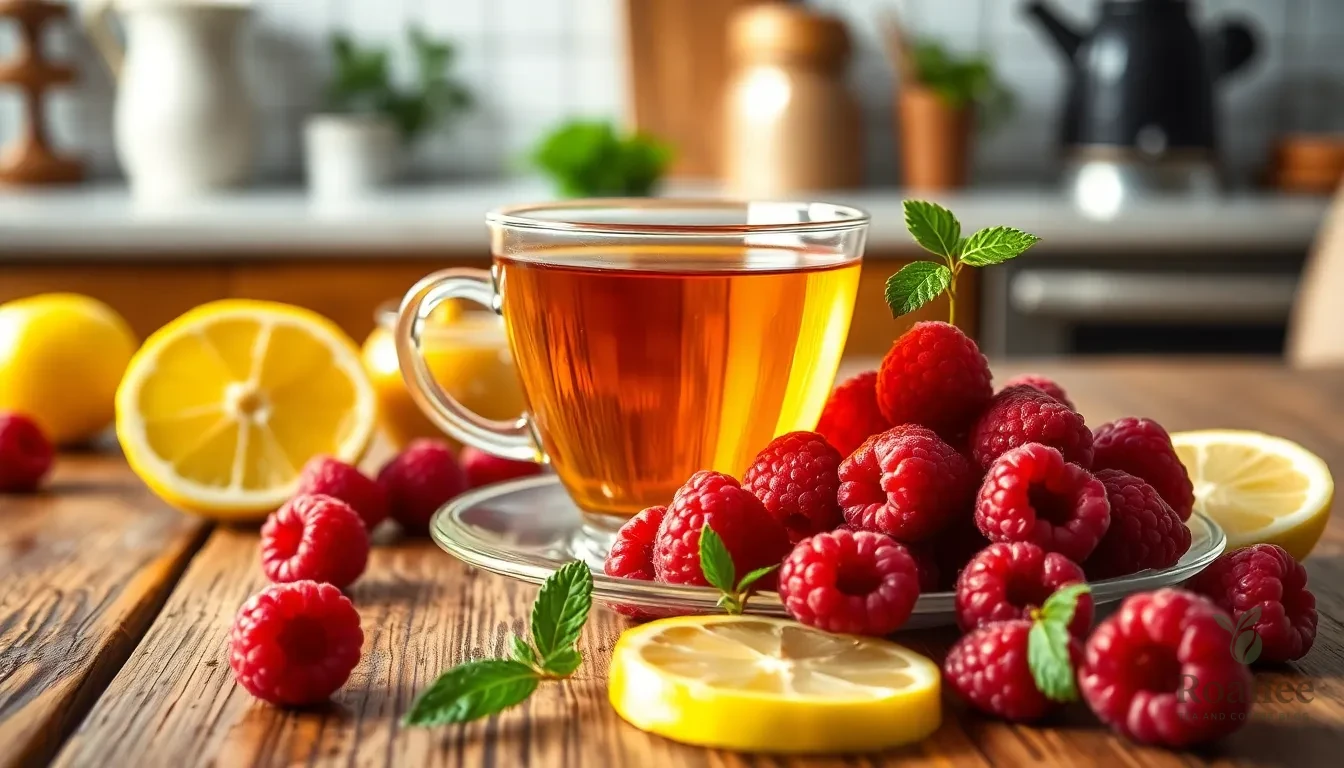
We can transform our perfectly brewed oolong tea into exciting flavor variations that showcase its versatility. Each variation brings out different aspects of oolong’s complex character while maintaining the tea’s distinctive qualities.
Milk Oolong Recipe
We start by brewing 1 tablespoon of Milk Oolong in 8-10 ounces of hot water at 195°F for optimal flavor extraction. The natural creamy characteristics of Milk Oolong varieties like Fujian Rain or Jade Oolong create an ideal base for enhanced milk preparations.
We add a splash of almond milk or dairy milk to complement the tea’s inherent smoothness. For a richer texture we can incorporate condensed milk or froth warm milk with brown sugar to create a luxurious drinking experience.
Advanced variations include blending matcha powder with ice for a matcha-oolong milk tea fusion. We can also combine lavender Earl Grey with our milk oolong base to create sophisticated cream tea latte variations that highlight floral notes.
Iced Oolong Tea
We begin by brewing our oolong tea using standard parameters then cooling it to room temperature before serving. This method preserves the tea’s delicate flavor compounds while creating a refreshing cold beverage.
We pour the cooled tea over ice and add sweeteners like honey or brown sugar to balance the natural astringency. For enhanced complexity we can use amber oolong varieties with a splash of vanilla extract to introduce roasted flavor notes.
Creative variations include adding fresh raspberries for berry brightness or incorporating tropical fruits like mango and pineapple for smoothie-style preparations. These fruit additions pair exceptionally well with oolong’s natural sweetness and create vibrant flavor profiles.
Honey Oolong Tea
We brew our oolong tea following proper temperature and steeping guidelines then sweeten with natural honey added after the tea cools slightly. This timing preserves honey’s beneficial properties while ensuring optimal flavor integration.
Lavender honey creates floral notes that complement oolong’s natural characteristics without overwhelming the tea’s subtle complexity. We find that honey enhances oolong’s inherent sweetness rather than masking its distinctive flavor profile.
The key lies in allowing the tea to cool below 140°F before adding honey to maintain the sweetener’s nutritional benefits and prevent bitterness from developing.
Lemon Oolong Tea
We brew our oolong tea using standard methods then add fresh lemon juice to create a bright citrus enhancement. This combination works equally well served hot or chilled over ice depending on preference.
Fresh lemon juice balances oolong’s natural floral and roasted notes while adding refreshing citrus brightness that awakens the palate. We can serve this variation without additional sweeteners since lemon’s acidity naturally enhances the tea’s inherent sweetness.
Optional sweeteners can be added according to personal taste preferences though we recommend tasting the lemon-oolong combination first to appreciate how citrus naturally complements the tea’s complex flavor spectrum.
Storage and Make-Ahead Instructions
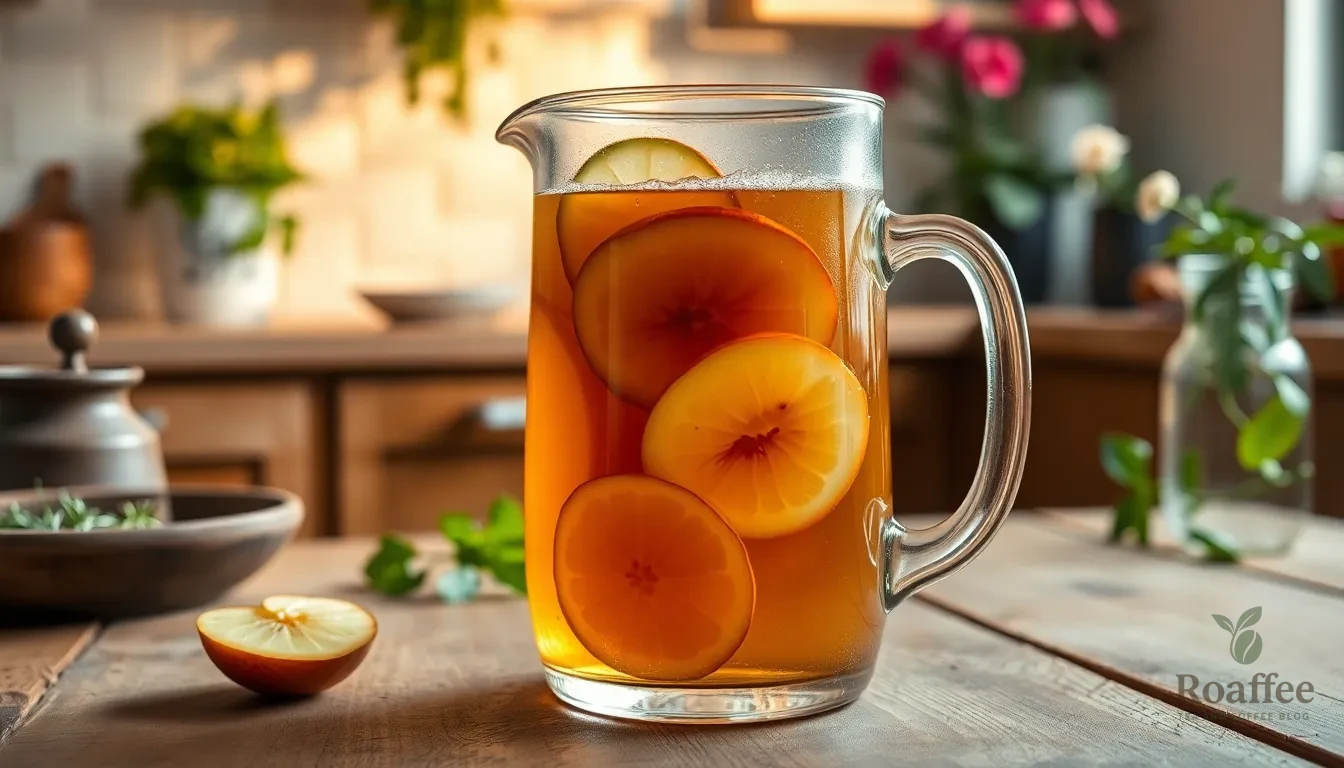
Proper storage preserves oolong tea’s complex flavor profile and extends its shelf life significantly. We’ll show you how to maintain freshness and prepare tea ahead of time for convenient enjoyment.
Storing Loose Leaf Oolong
Store loose leaf oolong tea in an airtight container away from light, moisture, and strong odors to preserve freshness. We recommend using glass jars or sealed tins placed in a cool, dark cupboard away from spices and coffee that might interfere with the tea’s delicate aroma.
Temperature fluctuations damage tea leaves, so avoid storing containers near stoves or in areas with frequent temperature changes. Dark locations maintain the tea’s natural oils and prevent flavor deterioration over time.
After brewing, keep leftover tea refrigerated and consume within 24 hours for optimal flavor. Hot brewed oolong loses its nuanced taste profile when stored longer than a day, even under proper refrigeration.
Preparing Cold Brew Oolong
Cold brewing yields a smooth, mellow infusion with rich floral and fruity notes and less bitterness than traditional hot brewing methods. We use 2-5 grams of loose leaf oolong per 225-250 ml of cold filtered water for the perfect concentration.
Place tea leaves in cold or chilled water and steep for 8-12 hours in the refrigerator. This extended steeping time allows the tea’s complex compounds to extract gradually without releasing excessive tannins that create bitterness.
Cold brew preserves antioxidants and complex aromas better than hot brewing while creating a refreshing base for summer beverages. We recommend using an infuser in a glass bottle to brew and serve directly without additional straining.
For enhanced flavor, add sliced peach and lime during the steeping process. The fruit’s natural sugars complement oolong’s inherent sweetness while adding subtle tropical notes to the finished tea.
Serve cold brewed oolong as iced tea or use it as a base for cocktails, mocktails, or refreshing summer drinks. The concentrate stores well in the refrigerator for up to three days when properly covered.
Serving Suggestions
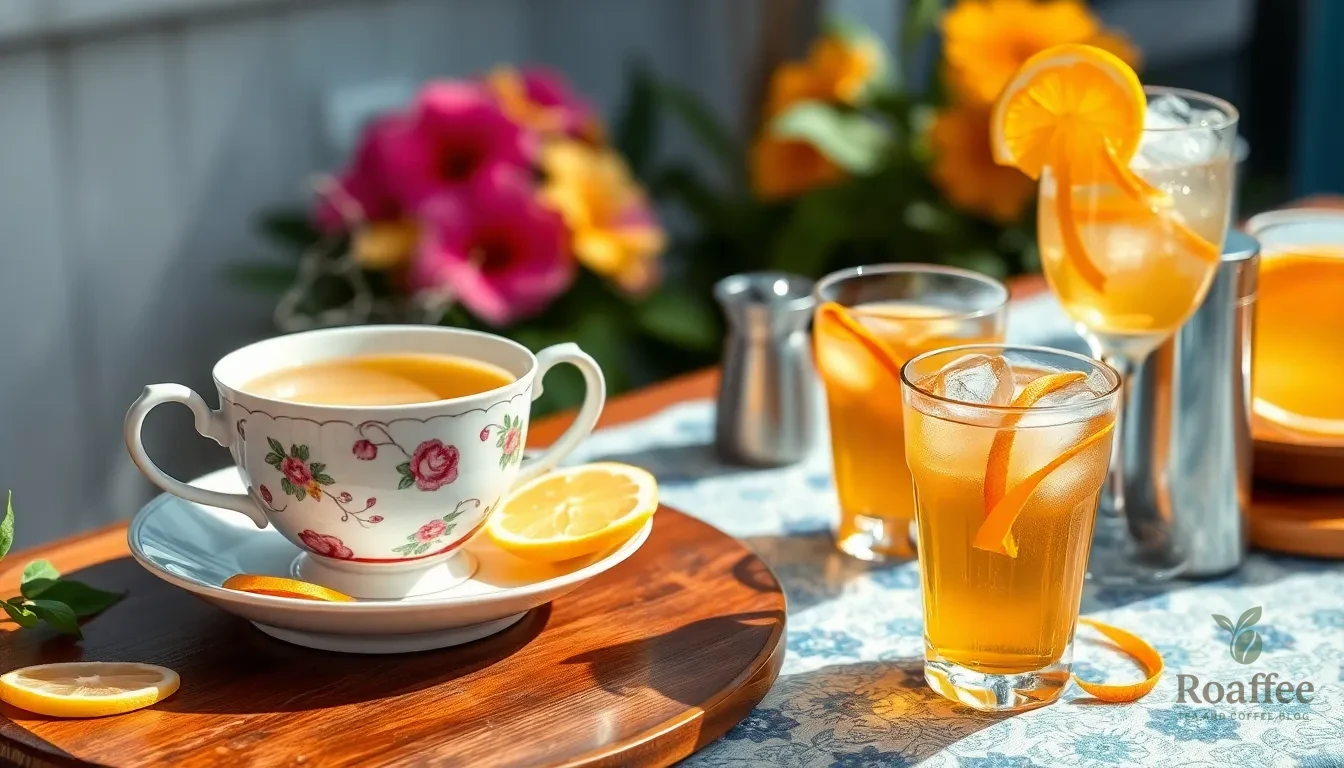
We love exploring the diverse ways to enjoy oolong tea beyond the traditional hot cup. Our perfectly brewed oolong opens up countless possibilities for both casual sipping and sophisticated entertaining.
Traditional Hot Serving
We recommend serving oolong tea in porcelain teacups with matching saucers to honor its traditional roots. The delicate ceramic enhances the tea’s complex aromatics while maintaining the ideal drinking temperature. For those who prefer a touch of sweetness, we suggest adding honey or fresh lemon juice after the tea has cooled slightly to preserve their beneficial properties.
Refreshing Cold Preparations
Transform your oolong into a refreshing summer drink by serving it “on the rocks” with ice and an orange peel twist. This method brings out the tea’s natural floral notes while providing a cooling sensation. We also enjoy combining chilled oolong with ginger beer and fresh lime for a sparkling long drink that perfectly balances the tea’s earthiness with bright citrus flavors.
Creative Cocktail Applications
Elevate your mixology skills with oolong-based cocktails that showcase the tea’s versatility. Try our favorite “Oolong Old Fashioned” by combining whisky, strongly brewed oolong tea, orange bitters, and sugar syrup. The tea’s complex flavor profile complements the whisky’s warmth while adding unique depth to this classic cocktail.
Food Pairing Excellence
We’ve discovered that oolong tea pairs beautifully with various foods, making it an excellent choice for meal accompaniments. Darker oolongs match perfectly with robust dishes like Indian, Thai, and Malaysian curries, where their oxidized notes complement heavy spices. Lighter oolongs provide a refreshing contrast to creamy dishes, cutting through rich textures with their bright acidity.
| Oolong Type | Best Food Pairings | Flavor Interaction |
|---|---|---|
| Dark Oolong | Curries, aged cheeses | Underscores sweetness, matches heavy spices |
| Light Oolong | Creamy dishes, hard cheeses | Cuts through fat and acidity |
| All Types | Sweet snacks, cookies, cake | Complements sweetness naturally |
Culinary Applications
We love incorporating oolong tea into cooking with our Sweet & Sour Orange Oolong Sauce. This versatile condiment combines strongly brewed oolong with fresh orange juice, honey, rice vinegar, soy sauce, minced garlic, and Sriracha. The result is a complex dipping sauce that works wonderfully with grilled meats, spring rolls, or as a marinade base.
Cheese Pairing Mastery
Oolong tea creates exceptional pairings with aged and hard cheeses. Darker oolongs underscore the natural sweetness found in aged varieties, while lighter oolongs cut through the fat and acidity of sharp cheeses. We suggest setting up a tasting board with different oolong varieties alongside complementary cheese selections for an elevated afternoon experience.
Conclusion
We’ve explored the art of brewing exceptional oolong tea and discovered why this remarkable tea deserves a place in every tea lover’s collection. From mastering the perfect water temperature to experimenting with creative flavor variations, you now have all the tools needed to brew consistently delicious cups.
The versatility of oolong tea truly shines through its ability to transform into countless variations – whether you prefer it hot with honey, iced with citrus, or even incorporated into cocktails and culinary creations. Each brewing method we’ve shared opens up new possibilities for enjoying this complex tea.
With proper storage techniques and our tested brewing methods, you’ll be able to enjoy fresh, flavorful oolong tea whenever the mood strikes. Remember that practice makes perfect, so don’t hesitate to adjust brewing parameters to match your personal taste preferences.
Frequently Asked Questions
What makes oolong tea unique compared to other teas?
Oolong tea strikes a perfect balance between the freshness of green tea and the boldness of black tea. Its distinctive processing method involves withering, oxidizing, and curling the leaves, creating a complex flavor profile that’s neither too light nor too strong. This partial oxidation process gives oolong its characteristic taste that appeals to both green and black tea lovers.
What equipment do I need to brew perfect oolong tea?
Essential equipment includes a ceramic or clay teapot or gaiwan, a digital kitchen scale for precise measurements, a water thermometer, a timer, and a fine mesh strainer. An electric kettle with temperature control is highly recommended, along with small ceramic or porcelain cups for the best tasting experience.
What’s the ideal water temperature for brewing oolong tea?
Most oolong varieties require water heated to 90-95°C (195-205°F). However, lighter, less oxidized oolongs need gentler temperatures around 80-85°C (175-185°F), while heavily oxidized oolongs can handle the higher end of the temperature range. Always use filtered water for the best flavor.
How long should I steep oolong tea?
For the first infusion, steep oolong tea for 3-5 minutes. Subsequent infusions require shorter steeping times, typically 1-2 minutes. Traditional Gongfu brewing allows for multiple short infusions, while Western-style steeping uses longer single infusions. Adjust timing based on your taste preferences.
What’s the proper tea-to-water ratio for oolong?
Use 2-5 grams of loose-leaf oolong tea per cup (approximately 3 teaspoons of loose leaves or 2 tea bags). For stronger flavor, increase the amount of tea rather than extending steeping time. The ratio can be adjusted based on personal preference and the specific oolong variety.
Should I rinse oolong tea leaves before brewing?
Yes, pre-rinsing oolong tea leaves is recommended. Pour hot water over the leaves briefly, then discard this first pour. This awakens the tea leaves and removes any dust, preparing them for optimal flavor extraction during the actual brewing process.
How should I store oolong tea?
Store loose-leaf oolong in an airtight container away from light, moisture, and strong odors. Keep it in a cool, dry place to preserve its complex flavor profile and extend shelf life. Proper storage maintains the tea’s quality and prevents flavor degradation.
Can I make iced oolong tea?
Absolutely! Brew oolong tea using the hot method, then allow it to cool before serving over ice. For cold brewing, steep loose-leaf oolong in cold filtered water for 8-12 hours in the refrigerator. This method produces a smooth, mellow infusion with enhanced floral and fruity notes.
What foods pair well with oolong tea?
Darker oolongs complement robust dishes like grilled meats and aged cheeses, while lighter oolongs pair beautifully with creamy foods, seafood, and delicate pastries. The tea’s complex flavor profile makes it versatile for both sweet and savory pairings.
Can I use oolong tea in cooking?
Yes! Oolong tea is versatile in culinary applications. You can create oolong-infused sauces, use it as a base for marinades, or incorporate it into desserts. Its complex flavor adds depth to both sweet and savory dishes, making it an excellent ingredient for creative cooking.



























